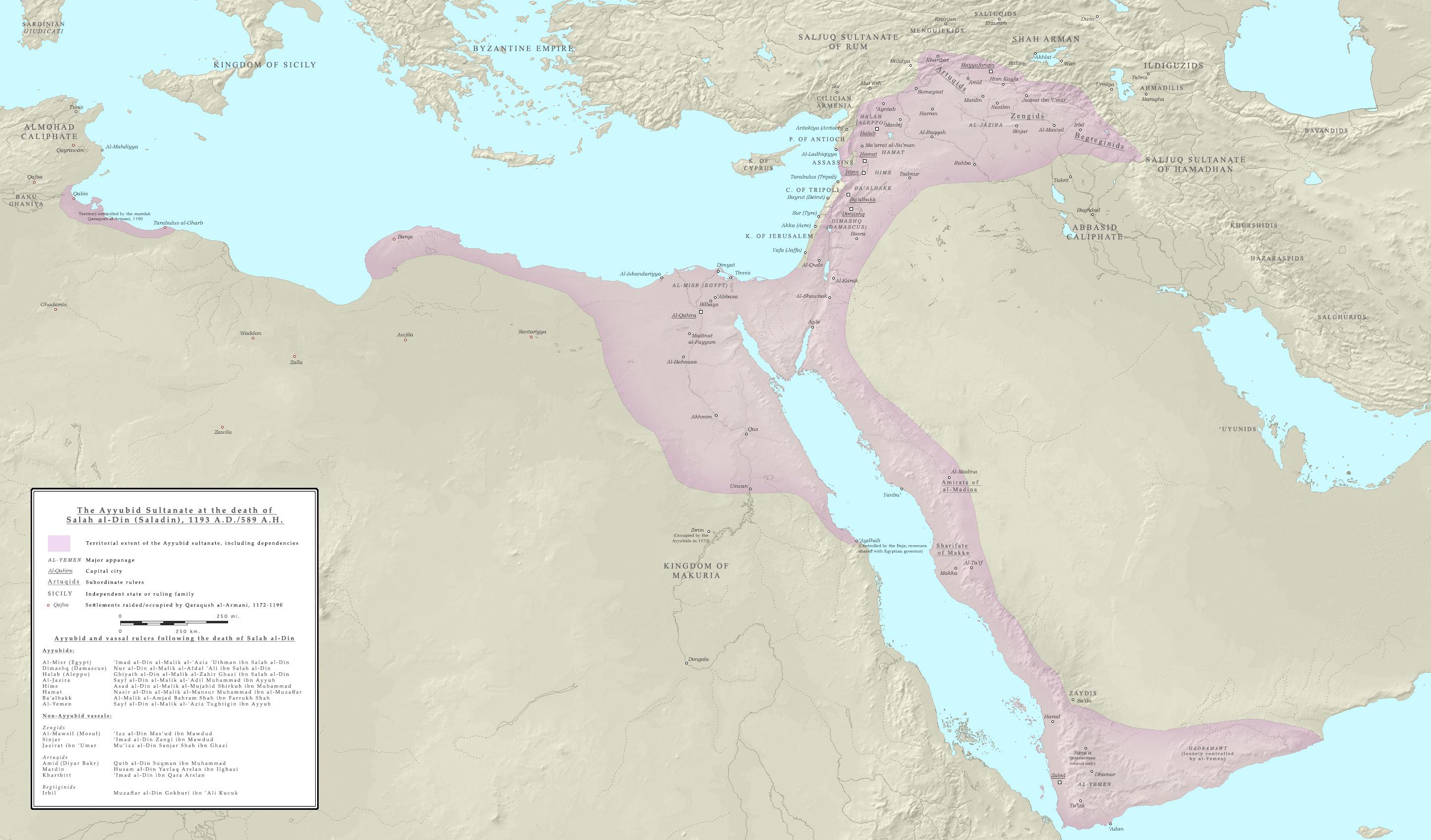Ayyubid Sultanate Extent Map by 1193


David Chen
Data Visualization Specialist
David Chen is an expert in transforming complex geographic datasets into compelling visual narratives. He combines his background in computer science ...
Geographic Analysis
What This Map Shows
This map illustrates the geographical extent of the Ayyubid Sultanate at the time of Saladin’s death in 1193. Spanning across a significant portion of the Middle East, the Ayyubid Sultanate was a powerful Islamic empire that emerged during the late 12th century. The visualization details the territories controlled by Saladin and his successors, highlighting key regions such as Egypt, Syria, and parts of the Arabian Peninsula. This geographical representation allows us to grasp the impressive reach of the Ayyubid Sultanate and its historical implications in the context of the Crusades.
Deep Dive into the Ayyubid Sultanate
The Ayyubid Sultanate, founded by Saladin, was a pivotal entity in Islamic history. Saladin, known for his leadership during the Crusades, united various Muslim territories under his rule, which not only strengthened his military position but also fostered cultural and economic exchanges across the region. The map showcases the extent of the Sultanate, which included modern-day Egypt, Syria, parts of Iraq, and Yemen, illustrating the strategic importance of these areas.
Interestingly, the Sultanate was characterized by a diverse population, including Arabs, Kurds, and various other ethnic groups. This mix of cultures enriched the social fabric of the empire, leading to advancements in science, architecture, and philosophy. Ever wondered why so many historical monuments from this era still stand today? The Ayyubids were renowned for their architectural innovations, including the construction of iconic structures like the Citadel of Cairo and various mosques that remain popular tourist attractions.
The Ayyubid economy was bolstered by trade, particularly due to its control of key trade routes. The Silk Road, for example, passed through regions under Ayyubid control, facilitating the exchange of goods, ideas, and culture between the East and West. This trade network not only provided wealth but also contributed to the significant cultural exchanges that shaped the Islamic Golden Age.
The strategic military campaigns led by Saladin against the Crusaders were crucial in unifying the Muslim territories. His victory at the Battle of Hattin in 1187 was a turning point that allowed him to recapture Jerusalem, a city of immense religious significance. The territorial expanse depicted in the map not only reflects military conquests but also showcases Saladin's diplomatic efforts to unite various factions under a singular Islamic identity.
Regional Analysis
Examining the regions under Ayyubid control reveals significant variations in governance, culture, and economic conditions. For instance, Egypt, as the heart of the Sultanate, was more urbanized and economically developed compared to the more rural areas of Yemen. The wealth of Egypt was primarily derived from its fertile Nile delta, which supported agriculture and trade.
Syria, on the other hand, was a cultural hub during Saladin's reign. Cities like Damascus and Aleppo flourished as centers of learning and commerce. The map highlights these key urban centers, which were essential for the administration of the vast Ayyubid territories. Interestingly, Saladin's ability to manage such diverse regions was a testament to his diplomatic skills, as he often forged alliances with local leaders.
In contrast, the Arabian Peninsula represented a different challenge. The Ayyubids faced resistance in this less centralized area, where tribal affiliations often took precedence over allegiance to the Sultanate. The control in regions like Hijaz, which includes the holy cities of Mecca and Medina, was vital for religious influence but challenging to maintain due to the strong tribal dynamics.
Significance and Impact
Understanding the extent of the Ayyubid Sultanate by 1193 is crucial for several reasons. Firstly, it helps us appreciate the political and cultural dynamics of the medieval Islamic world. The Ayyubids played a significant role in shaping the relationship between different Muslim factions and the Crusaders, influencing future interactions and conflicts.
Moreover, the legacy of Saladin and the Ayyubid Sultanate continues to resonate today, particularly in discussions about leadership, unity, and religious identity in the Arab world. The map serves as a reminder of a time when unity among diverse groups was achieved through both military might and diplomacy. As we look forward, understanding these historical contexts can provide valuable insights into current geopolitical issues in the Middle East.
In conclusion, the Ayyubid Sultanate represented a remarkable chapter in Islamic history, and this map effectively encapsulates its geographical and cultural significance. By analyzing the extent of the empire at the time of Saladin's death, we gain a deeper appreciation for the complexities of governance, culture, and conflict during this pivotal era.
Visualization Details
- Published
- August 9, 2025
- Views
- 116
Comments
Loading comments...